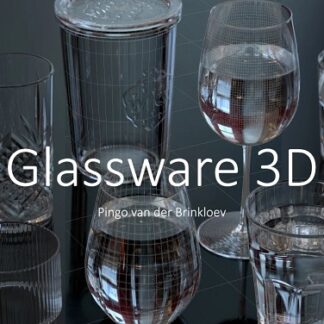Description
We believe this might be *the most* comprehensive photogrammetry video course, hands down. The course that will teach you how to make hyper-realistic 3d assets from photos. And not simply ‘any’ 3d assets, but the ones that are professional and clean and will enhance the realism of your 3d environments, like nothing else.
WHAT’S INSIDE?
• Over 12 hours of step-by-step tutorials, 1080p, 60fps
• 80+ videos
• 2 workflows: open-source and affordable commercial
• Best practices of photogrammetry
• Software Used: Blender 3.0, Reality Capture, Gimp, Darktable
• Skill Level: Intermediate
YEARS OF EXPERIENCE IN ONE COURSE
Both Aidy and I were fascinated by the magic of taking photos of something and turning it into a crazy detailed 3d model. The model that looks more real than can be believed. And now, we want to share what we’ve learned over these years with you. In one complete package.
REQUIREMENTS
Photogrammetry is an advanced technology and it it can be demanding in terms of hardware needed to capture the images and then having the computing power to process them.
So, these are the things that we recommend having before enrolling in the course:
• An entry-level DSLR or a mirrorless camera (if you don’t have a camera, it’s possible to photoscan using a smartphone).
• Some basic photography knowledge.
• Some familiarity with Blender’s modeling tools. We’ll be doing a lot of clean-up work in Blender.
• A small budget to buy the Reality Capture credits. The time saved and accuracy gained will be worth it to take it to the next level.
• At the time of release, an NVIDIA GPU card with a CUDA compute capability is required for full operation of both Reality Capture and Meshroom.
CHAPTERS
This course is more than 12 hours of step-by-step tutorials, that cover the entire photoscanning process from taking photos to seeing the finished 3d model with baked textures in Blender’s viewport.
CHAPTER 1. Best Practices of Photogrammetry
We start with the best practices of photogrammetry that will help you to obtain the highest quality sources.
How the capturing device affects the final quality of the scan, what are the optimal camera settings and shooting patterns for every situation and how to pre-process the RAW photos in the freely available software Darktable (with and without color checker).
CHAPTER 2. The Basics of Photogrammetry in Reality Capture and Blender
In the 2nd chapter we’ll explore the basics of the photogrammetry pipeline in Reality Capture and Blender, with the source photos taken on an average phone – all the way to a production-quality 3d prop.
CHAPTER 2b. Full 360° Scanning In-house
A showcase of an in-house scanning setup that uses a turntable and a controlled light for a full 360 degrees model that’s useable even without retopology.
CHAPTER 2c. Meshroom, 100% Free Workflow
The continuation of the 3rd chapter will guide you through the photogrammetry process using free and opensource Meshroom to get the same high-quality result as fast as possible.
CHAPTER 3a. Extracting a PBR material
Photogrammetry is not only about capturing objects, but also about capturing 3d surfaces for texturing. Get acquainted with the tileable PBR materials workflow in Reality Capture, Blender and Gimp.
CHAPTER 3b. PBR surfaces blending techniques
With heightmaps we get access to more interesting and convincing ways to blend these surfaces together. So in this chapter we’ll also be looking at how to mix 2.5d surfaces using their heightmaps in Blender.
CHAPTER 4. Advanced 3d Environment Assets Workflow
In the advanced 3d environment assets workflow chapter we’ll create a pack of modular 3d assets based on the raw scan of an abandoned building and learn how to…
• Organize large projects, pre-process the sources
• Extract the modular pieces out of the raw high-poly scan
• Rebuild, fix the holes and restore the missing parts in Blender (via sculpting and standard modeling)
• Bake normals and displacement textures, de-light the albedo
…and much more!
Every part of the raw scan will be meticulously broken into modules like lowpoly bricks with displacement, detachable and movable window frames, doors that can actually swing, the roof details from which any number of similar roofs can be assembled and so on, for maximum versatility and realism. Visualized in Eevee or in Cycles with micropolygon displacement.
5. Advanced Retopology Primer
Finally, we’ll look at how to rebuild, reproject and bake raw scans onto retopologized meshes using a fraction of the polygons with a range of manual and automated techniques.
Sales Page: _https://creativeshrimp.gumroad.com/l/photogrammetry-course




